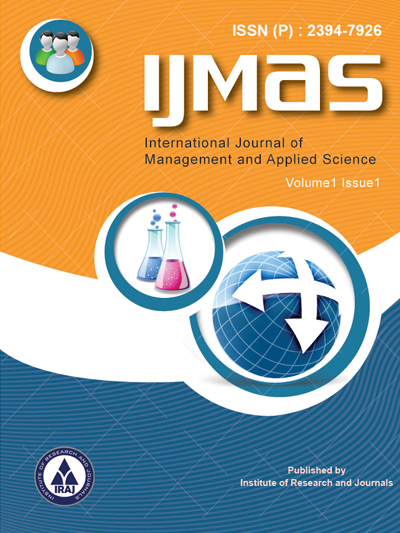Publish In |
International Journal of Management and Applied Science (IJMAS)-IJMAS |
 Journal Home Volume Issue |
||||||||
Issue |
Volume-6,Issue-5 ( May, 2020 ) | |||||||||
Paper Title |
A Comprehensive Analysis of Indian Poverty with Respect to Regional Dimensions since Liberalization Period | |||||||||
Author Name |
Pallabi Mukherjee, Kanhaiya Ahuja | |||||||||
Affilition |
Assistant Professor, Institute of Business Management & Research, IPS Academy, Indore, M.P, India Professor in Economics, School of Economics, DAVV, Indore, M.P, India | |||||||||
Pages |
4-8 | |||||||||
Abstract |
The below poverty level concept that signifies that the individuals are earning enough to stay among the poor community, was outlined by the government of India. Indian poverty levels have so far been extremely challenging to minimize and eradicate. The precise degree of poverty testified in the paper is the poverty rate or head-count-ratio (HCR), which is the percentage of the population with spending or income underneath a pre-specified level insinuated to as the poverty line. In this study we have tried to identify the augmenting or diminishing percentage of people below poverty line with respect some of the selected dimensions. The measurements embrace urban and rural poverty levels and also four different regions of India in three different years (1993-94, 2004-05, 2011-12) after the inception of trade liberalization. We have introduced dummy variables in order to identify the transformations between rural and urban poverty and also regional poverty with respect to four different regions (South, East, West Central and North) and conducted linear regression in the data. The results substantiate the diminution in poverty levels over the time period. Urban poverty levels are lower than rural and percentage of people below poverty line is less in southern India in comparison to the east and west central. Keywords – Poverty Level, Head-Count-Ratio (HCR), Liberalization Period | |||||||||
| View Paper | ||||||||||